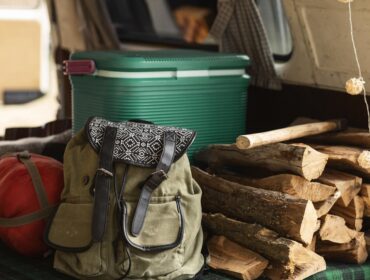We love all the different animal camouflage among our planet’s species, particularly when it comes to our feathered friends. While many creatures use camouflage for various purposes, birds have a knack for using it in such beautiful and clever ways, as if the ability to fly away quickly were the least of their predator-avoiding skills. Here are five more amazing examples of bird camouflage.
1. Green Broadbill
This bird is the color and shape of a leaf, and not surprisingly, it sits in treetops much of the day, staying as motionless as possible. Hard to detect from both above and below, this camouflage helps the Green Broadbill escape the notice of predators. They are native to Sumatra, Borneo, and parts of Malaysia and are an important part of fig tree seed distribution.
2. Eastern Screech Owl
Far easier to hear than see, this small owl makes its home east of the Rocky Mountains in the United States. Its color ranges from gray to reddish-brown, but whatever their overall color, their pattern includes complex bands and spots that let it blend perfectly with tree bark. This coloration helps it hide from unsuspecting prey like rodents and smaller birds.
3. Himalayan Snowcock
When your mountain home is full of hungry eagles, blending in is important. The Himalayan Snowcock does it through both color and pattern, its feathers mimicking the appearance of a rocky, snow-dappled cliff when seen from above. These herbivorous birds live throughout the mountains of central Asia. A population was also introduced to Nevada in the United States.
4. Egyptian Nightjar
There are many types of nightjar, and these ground-nesters are the undisputed masters of bird camouflage. The Egyptian Nightjar in particular blends in so well with the sand that people who photograph them often can’t find them in the picture later. Its range extends from North Africa and the Middle East to southwest Asia.
5. California Quail
The California quail is the state bird of California, but can be found all along the North American west coast, from Baja California to inland areas of British Columbia, Canada. These birds are highly sociable, often found in groups called “coveys.” One of the unique characteristics of the California quail is how much they enjoy dust baths, which contributes to their camouflage, but ironically leaves a distinctive indentation in the dirt that ornithologists can use to detect their presence.
Featured Image from Y S/Unsplash




